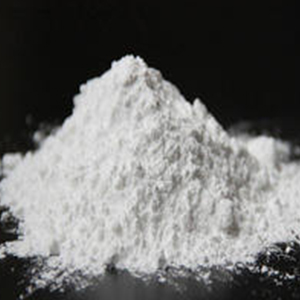
| Derivation | Acetic acid and the sodium salt of acetic acid |
| Formula | CH3COONa*CH3COOH |
| Mol. Wt. | 142.09 |
| CAS #: | 126-96-5 |
| E/A-numbers | E262; A262 |
| Appearance | White crystalline powder with an acetous odor |
| Assay | Acetic Acid: 39.0 - 41.0% and Sodium Acetate: 58.0 - 60.0% |
| Moisture | 1% maximum |
| pH | 4-5 |
| Arsenic | 1 ppm maximum |
| Heavy | 2 ppm maximum |
| Grades | FCC and Technical |
Sodium Hydrogen Diacetate
CH3COONa-CH3COOH-xH2O
C4H7NaO4-xH2O Formula wt, anhydrous 142.09
NS: 262 CAS: [126-96-5]
DESCRIPTION
Sodium Diacetate occurs as a white, hygroscopic, crystalline solid. It is a molecular compound of sodium acetate and acetic acid. One gram is soluble in about 1 mL of water. The pH of a 1:10 aqueous solution is between 4.5 and 5.0.
Function: Sequestrant; preservative; antimicrobial agent; mold inhibitor.
REQUIREMENTS
Identification: A 1:10 aqueous solution gives positive tests for Acetate and for Sodium.
Assay: Not less than 39.0% and not more than 41.0% of free acetic acid (CH3COOH), and not less than 58.0% and not more than 60.0% of sodium acetate (CH3COONa), calculated on the anhydrous basis.
Lead: Not more than 2 mg/kg.
Readily Oxidizable Substances (as formic acid): Not more than 0.2%.
Water: Not more than 2.0%.
We manufacture Sodium Diacetate also called Sodium Di acetate from virgin raw material by reaction. We tailor make it to suit the grain size as specified by the buyer.
SODIUM DIACETATE (diacetato de sodio, natriumdiacetat) has long been used as a food additive. Sodium Diacetate is a free flowing, dust free and readily available source of Acetic acid , the acid familiar to the housewives. Sodium Diacetate (E262) provides a solid source of acetic acid for use in dry products.
Food industry:
SODIUM DIACETATE is a generally recognized as safe ingredient (GRAS) by the US FDA, and is also a generally permitted food additive in Europe and elsewhere. The FDA's CFR 184.1754 limits the use of SODIUM DI ACETATE to levels not to exceed current good manufacturing practices, and specifically defines the levels of the material in various food applications.
Sodium diacetate has some specific uses as a source of acetic acid in bread production. It is also used as a flavoring in dry products, particularly to impart the flavor of vinegar. It inhibits growth of certain types of mold and many deleterious micro-organism in dough and bread (notably Bacillus Mesentericus). It generally serves three purposes: as a pH control agent, as a flavor enhancer and as a microbial inhibitor. SODIUM DIACETATE, usually in combination with lactates, is widely used by the meat packing industry as an excellent anti-microbial preservative. Vinegar taste on potato chips or tacos can be achieved by adding 0.1% sodium diacetate.
Other Applications:
AGRONOMY: The bacteriostatic effects of Sodium Diacetate make it an effective preservative for hay.
Other uses of Sodium di acetate include the usage in the foam and photographic industry for controlling pH and the replacement of oxalic or citric acid for hardening,
fixing and toning.
Sodium diacetate is an excellent buffer and as such, is used for pH control. Its use as buffer and stabilizer in petroleum production and drilling mud is common.
Sodium Di acetate is used as effective preservative for hay. In field of Medicine it is a popular constituents of dry blends used for renal dialysis.
MEDICINE: Sodium Diacetate is a popular ingredient in renal dialysis dry blends.